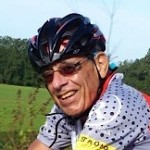
A review of 17 studies, covering almost 200,000 people, found that men who work at the most physically active jobs have an 18 percent higher risk of premature death compared to people with less physically-demanding jobs (British J of Sports Medicine, May 14, 2018). Most of the studies in the review tried to correct for life-shortening habits such as smoking or drinking alcohol. The increased risk of dying for men with physically demanding jobs remained even for men who also exercised outside of work. The authors did not find that women who had to keep moving at work had shortened life spans, probably because work-related physical activity for women is usually not as demanding as it is for men.
In the early 1950s, The London Bus Drivers’ study showed that bus conductors who had to walk up and down two-story buses to collect fares lived longer and suffered fewer heart attacks than the bus drivers who sat in one place all day long (Lancet, 1953;265:1111–20). This was a strong and respected study because the drivers and fare collectors came from the same families and neighborhoods and had the same habits, income, educational levels and backgrounds. However, the men who collected the fares could sit down and rest after every stop to recover from their physical activity. They were certainly more active than the drivers, but their jobs were not nearly as physically demanding as the work of manual laborers such as road and construction workers, who often have to keep on pushing themselves even when they are exhausted. Other studies have shown that jobs that require hard physical work increase risk for heart attacks (Br J Sports Med, 2018;52), absence from work due to illness (Br J Sports Med, 2012;46:291–50), and premature death (Occup Environ Med, 2015;72:617–24).
This new data certainly does not mean that physical activity shortens lives. The literature overwhelmingly shows that exercise prolongs lives and that most people do not get the recommended minimum of 150 minutes of exercise each week. Lack of exercise has been shown to raise blood pressure, sugar and cholesterol to increase risk for obesity, diabetes, heart attacks, strokes, some types of cancers and other causes of premature death.
Why The Difference?
There is a huge difference between exercising at work and exercising by choice. For example, people who work in physically demanding jobs are generally:
• Tired when they come home. Physical laborers are far less likely to have an exercise program and have been shown to be fairly inactive during their leisure time (BMJ Open, 2013;3:e002690). When you have to haul heavy objects, operate machinery or mine coal, you have to keep moving all the time at work. On the other hand, when you exercise by choice, you can take breaks when you feel the need. Most people with physically demanding jobs are so tired when they leave work that they have to rest to recover and prepare for their next day of hard work, so they do not participate in pleasurable leisure exercise.
• At a lower educational level and therefore are less likely to understand the benefits of healthful lifestyle choices. They are at increased risk for following an unhealthful diet, full of junk foods and low in vegetables, fruits, nuts and other seeds; and using tobacco products, alcohol and recreational drugs.
Why Recreational Exercise is More Healthful than Physical Labor
Work that requires heavy physical activity forces you to work hard every day and does not allow you to recover adequately from each day’s work. All serious exercisers usually learn sooner or later that the benefits of exercise depend on a “stress and recover” program. To make a muscle stronger, you have to exercise intensely enough to feel the burn in your muscles. That means that you have damaged the muscle fibers at their Z-lines. Your muscles feel sore the next day, so you have to exercise at reduced intensity or take a day off. Otherwise you will tear a muscle or tendon and then have to wait a while for it to heal. Exercise done intelligently follows a sequence of moving more intensely on one day and then recovering for as many days as it takes for muscles to heal.
Exercise helps to prevent heart attacks by growing new blood vessels, increasing your VO2max (the maximal ability to take in and use oxygen), and stabilizing plaques. You do that by exercising to the point of becoming short of breath and feeling a burning in your muscles on one day, and then recovering on the next.
My Recommendations
Studies on the subject overwhelmingly show that everyone, particularly people who have sedentary jobs, should have an exercise program to help prevent disease and prolong life.
• If you work in a physically demanding job, learn how to pace yourself. When you are tired or feel burning in your muscles, slow down or take a break if you can. Then you may not feel too tired to exercise when you are not working.
• Exercisers should set up their programs so they eventually work up to the point where they can exercise to the start of a muscle burn or shortness of breath, slow down until they are fully recovered, and then pick up the pace again. When their muscles start to feel heavy or tight, they should stop their workout. On the next day, they should go at very low intensity or take the day off.
Dr. Gabe Mirkin is a Villager. Learn more at www.drmirkin.com

